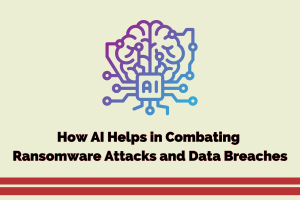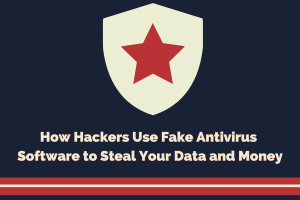Key Node.js Security Issues to Consider

Absolutely safe frameworks don’t exist, as practice shows. Node.js isn’t an exception: it is vulnerable to many types of problems. Indeed, the central packages are more or less secure. After all, thousands of people monitor them. However, using only the main Node.js packages isn’t optimal. You need many third-party options. And, here come the challenges: 14% of the programs in Node Package Managers (NPM) have security issues. In the end, the core problems end up affecting up to 54% of the whole Node.js package ‘universe.’ Overcoming these challenges is an integral part of quality in proper node js development services.
What Causes the Risks in Question?
Node.js features the problems that all open source software has. It copies the issues of the internal free components. Since such libraries and programs are countless, analysis-centric software can be effective in a relatively minor number of cases.
Finding the problems with free elements in the analyzed framework isn’t simple. Experts must look at index files in the existing package add-on programs to see the dependencies. But, even this procedure isn’t sufficient: the presented tools don’t highlight all vulnerabilities.
Open source developers tend to reuse the code from other free projects to speed up their work. Why reinvent the wheel if many important libraries are already available on GitHub? The result is detrimental. Node.js products have licensing terms different from the original framework-centric ones. At the same time, they feature old code-related problems.
Do We Have to Consider Node.Js a Security Issue?
Some experts see Node.js as a relatively strong safety challenge. The reason to accept this vision is simple. Node.js has no standard internal way to handle errors. Any issue can crash your server, for example.
Other problems prove to be significant too. Firstly, Node.js appears vulnerable regarding fishing and DDoS attacks. Secondly, some traditional web-oriented issues are present too. They include request faking distributed across a site, problems with security configuration, and malignant scripts. Lastly, the aforementioned free and open elements deserve consideration. We will give a complete description of them further.
Critical Free/Open Software Issues in Node.js
As mentioned previously, hidden vulnerabilities in Node.js are common. Various covert licenses can create tremendous problems for your business (both security- and legality-wise). As the table below shows, several free/open elements can cause significant issues.

5 Central Node.js Risks
Node.js problems can make anyone a victim of attacks that involve issues such as advanced persistent threats. Various man-in-the-middle (MITM) and site modification attempts also appear to be possible. So, look at the outline that includes the main challenges capable of enabling the intrusions and some potential responses to them.
1. Outdated Express versions
A vast number of programmers actively use Express to create Internet-based programs. They expose various companies to extreme dangers since the framework features little orientation on safety. This aspect is especially crucial regarding the old versions of Express. In the end, experts recommend staying as up-to-date as possible. Novel updates at least have some security patches.
Another good solution is to use Helmet software. The program protects HTTP headers through a series of intermediary functions. For example, specialists used it to prevent script-based attacks and MITM issues.
2. Malignant cross-site scripts
Hackers may present disruptive changes capable of affecting users via Cross-Site Scripting (XSS). The criminals can then use them to steal vital information. An excellent solution to this problem is to utilize manual output encoding or special software (Jade engine is a good solution) that does it automatically.
3. CSFR-Based issues
Cross-Site Forgery Requests (CSFR) are also a significant problem to consider. The general idea behind them is to push users towards doing some additional masked actions in authorized environments. These intrusions aim to see transformations regarding various application-centric requests. Such information is usually sufficient even though hackers can’t see the full-scale forged response.
One of the main ways to promote such malignant practices is social engineering. For example, criminals can send various hacked links via social media messages. Then, they can enforce user changes of several types. Fund transfer and email modifications are among the key issues. Experts note cases where whole web applications got compromised through these attacks.
The critical way to combat CSFR involves so-called Anti-Forgery Tokens. Sites can use such tokens to see whether user requests are authentic.
4. Using default cookie session name
The main path for identifying users includes cookies. They usually store all the activities you do on a website. For example, when you buy something on the Internet, cookies enable shopping carts of various kinds.
Session cookies offer a way for a site to remember your actions. During purchase confirmation, cookies allow you to preserve all your choices. Disable them, and such functions will stop working.
If you use regular (default) names for the cookies, criminals will have no trouble entering into the covert website parts. All they need to do is to slightly modify the cookie information. Generally, experts must use special cookie modifiers that change default names (for instance, express-session) to prevent this problem.
5. Vulnerabilities of X-Powered-By Header
X-Powered-By Header is a popular approach today. Specific frameworks use it as a default option. What is the problem? The software reveals many of your frameworks. Malignant individuals abuse the header to discover what Node.js problems are present. Fighting this problem is easy: stop using this header.
Conclusion
To use Node.js reliably, a specialist must understand its third-party foundations. The greater your knowledge regarding free/open elements and covert licenses is, the better. Various independent tools can also help you upgrade the overall safety level. If you are confused about these issues, a good option is to start cooperating with a Node.js assistance business.






